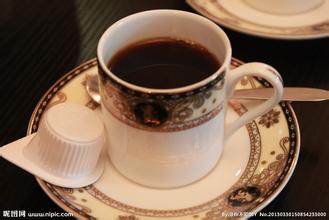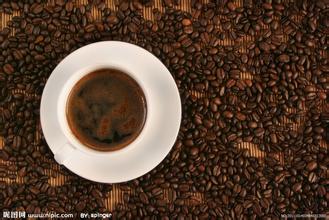The bigger the number, the thicker it is. -hario hand grinder thickness
Is the bigger the number, the thicker the bean grinder?-hario hand grinder thickness
If you try it a few more times, you can feel your own suitable scale. Remember that fine is a sense of over-abstraction, thick is a sense of mediocrity, and everyone's scale will not be the same.
Different bean grinders have different adjustment dials, so you should check the model of the coffee grinder and read the instructions carefully to determine the direction and strength of the dial. In general, if you keep in the habit of checking the settings of the bean grinder, you only need to make very small adjustments. As long as you move the turntable within 3 mm, you can change the thickness of the powder. Although 3 mm is a very small number, the grinding time of the same coffee beans will change for 3-5 seconds to observe the coffee powder. High-quality coffee powder should be powdery and gravel. If the coffee powder is soft, like flour, it means the powder is fine. On the contrary, if the coffee powder feels tough and rough, it means the powder is too coarse. When the coffee bean enters the grinder, the blade in the grinder will crush the coffee bean into powder. The smaller the distance between the blade and the blade, the smaller the coffee beans will be ground into smaller particles. The finer the ground particles are, the tighter they will be.
1, grinding speed
To put it simply, the faster the rotational speed, the larger the cutter head, the faster the grinding, that is, the higher the work efficiency, the shorter the exposure time of the coffee powder from grinding to the extraction, and the more benefits to the extraction, but the faster the rotational speed is, the higher the heat, the powder is very fragile in the high heat environment, and the heat is also related to the grinding time, the longer the blade working time, the hotter the blade is. But the faster the speed can reduce the grinding time, which sounds contradictory in the analysis, which leads to another variable, the size of the cutterhead. So the more expensive the grinding, the closer to the trend of "low speed, big knife head", it is not complicated to understand, there is not much description here.
2, the uniform degree of grinding
This has something to do with the rotational speed, the workmanship of the blade, and the amount of beans, there are many subtle variables, but in general, in the case of a single variable, the more uniform the rotational speed is, the more uniform the blade axisymmetry is, and the smaller the change in the amount of beans is, the more uniform the grinding will be. as for the degree of uniformity, this is something that cannot be quantified numerically and can only produce differences in comparison.
3, the heat generated
Mazzer, as well as many bean grinders have air-cooled systems, coupled with efficient work (Ref. 1,), have avoided this problem to a minimum, but still can not be completely avoided, it seems that some concept machines have adopted hollow cutterhead and water cooling system, hoping that one day, on the strong industrial basis of human beings, this point can be popularized.
4, whether quantitative or not
This involves powder control, the following details. Of course, in terms of horizontal comparison, quantitative grinding must be a little more expensive than semi-automatic manual grinding.

Important Notice :
前街咖啡 FrontStreet Coffee has moved to new addredd:
FrontStreet Coffee Address: 315,Donghua East Road,GuangZhou
Tel:020 38364473
- Prev

French filter pot for brewing coffee.-how much coffee powder do you need?
French filter pot apparatus for brewing coffee-how much coffee powder is needed to observe the condition of beans, because French pressure is the easiest device to concentrate on the condition of beans. You can look at the amount of crema after the coffee comes into contact with water, and the coffee is suspended on the water and slowly sinks down. Observing these phenomena can not only learn more about beans, but also have a deeper understanding of other equipment.
- Next

How much is the thickness of the bean grinder?-hario bean mill thickness adjustment
What is the size of the hario grinder? it takes a short time for the ESPRESSO machine to adjust the thickness of the ESPRESSO machine to make coffee, so the coffee powder is as fine as flour; it takes about 45 seconds to siphon the coffee, and the coffee powder is of medium thickness; the American coffee maker and hand-brewed bubbles are generally coarse and fine. Proper grinding degree of coffee powder.
Related
- What is the Philharmonic pressure? How to use Philharmonic pressure to make delicious coffee
- Why does a hand grinder have more fine powder than an electric grinder?
- In addition to the hot mom, what is the difference between the versions of EK43 | ditting and Mahdi ek43?
- What kind of equipment do you need to make coffee by hand? Introduction to novice starter cooking equipment tools
- Espresso needs to be ground how thick and thin scale entry Italian Coffee Machine Bean Grinder investigation and Grinding course
- How much does it cost to open a small private cafe? How much does it cost to learn coffee? How to operate it?
- The difference between the flavor characteristics of hand-brewed coffee and coffee maker is hand-brewed coffee really better than coffee maker? Can I use a coffee machine to make coffee beans by hand?
- The difference between 01 and 02 of hario v60 filter cup what is the difference between 01 and 02 filter cup opening and cooking flavor
- What's the difference between the smart cup and the French kettle? Which is better, the French kettle or the Smart Cup?
- What's the difference between a smart cup and a V60 filter cup? The difference between the taste of smart cup and hand-brewed coffee

